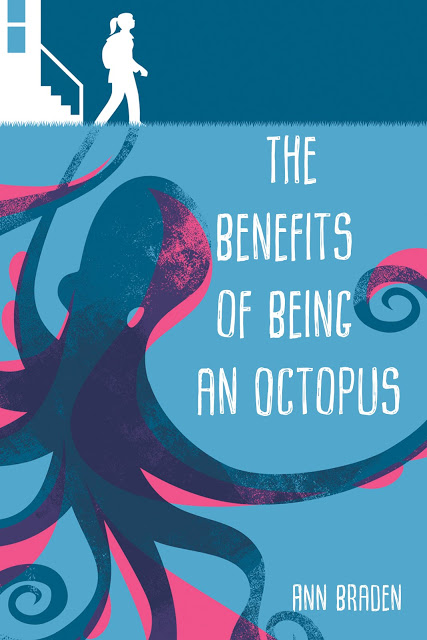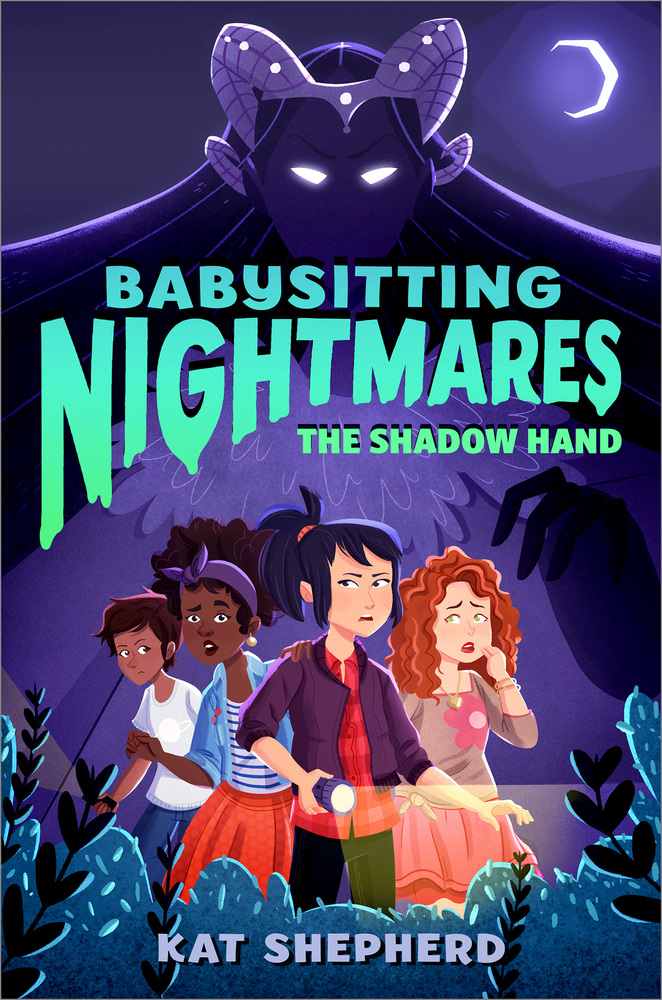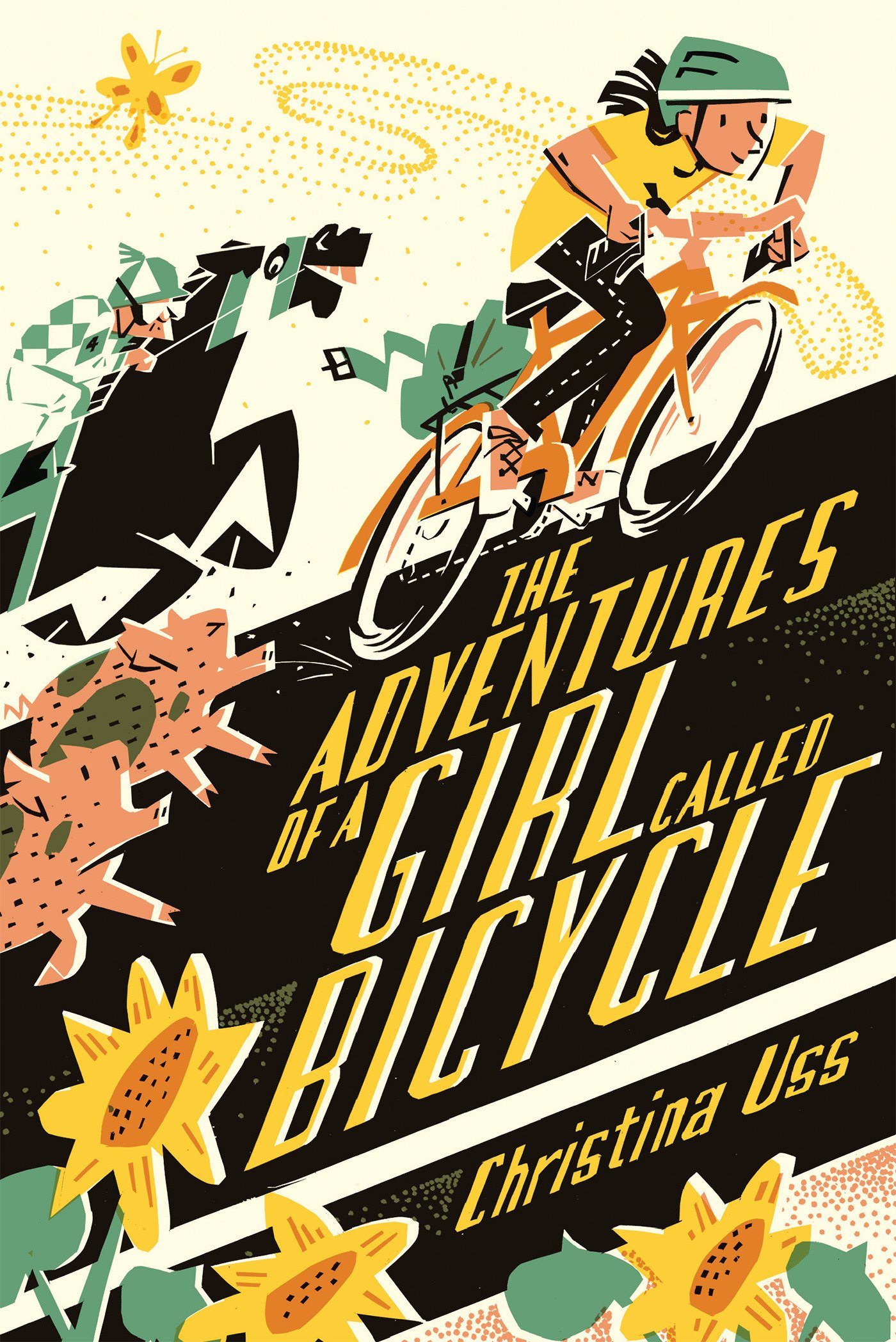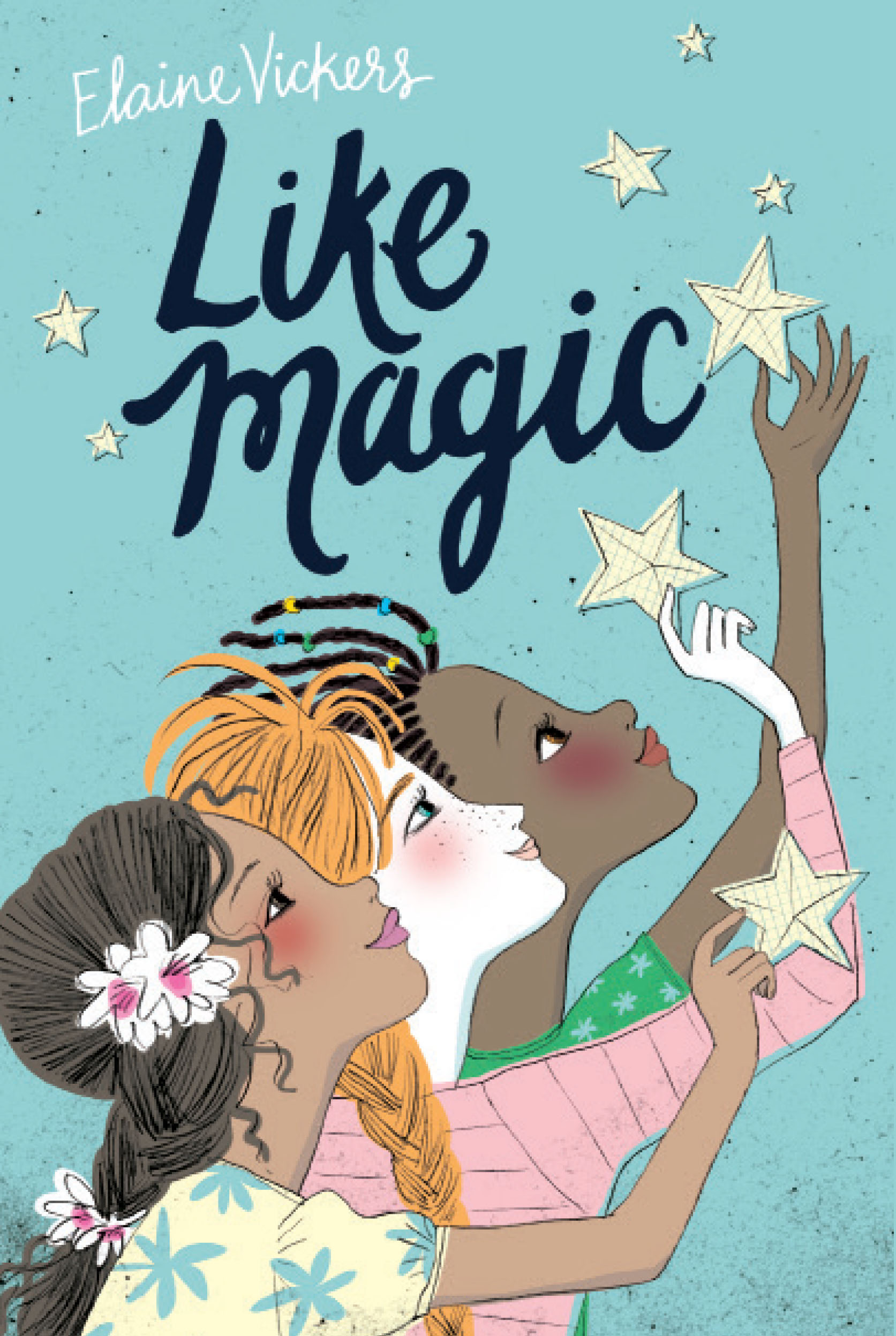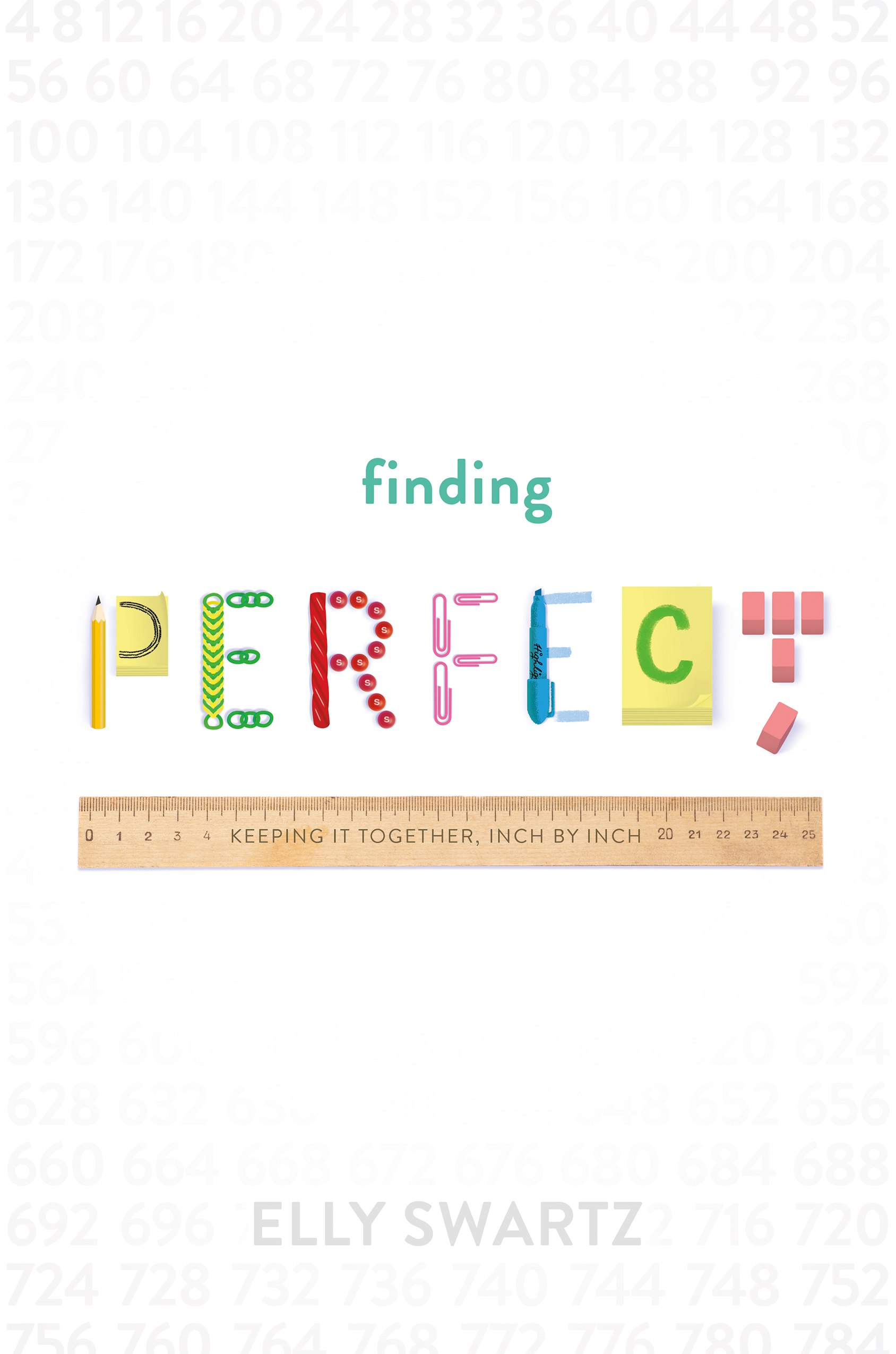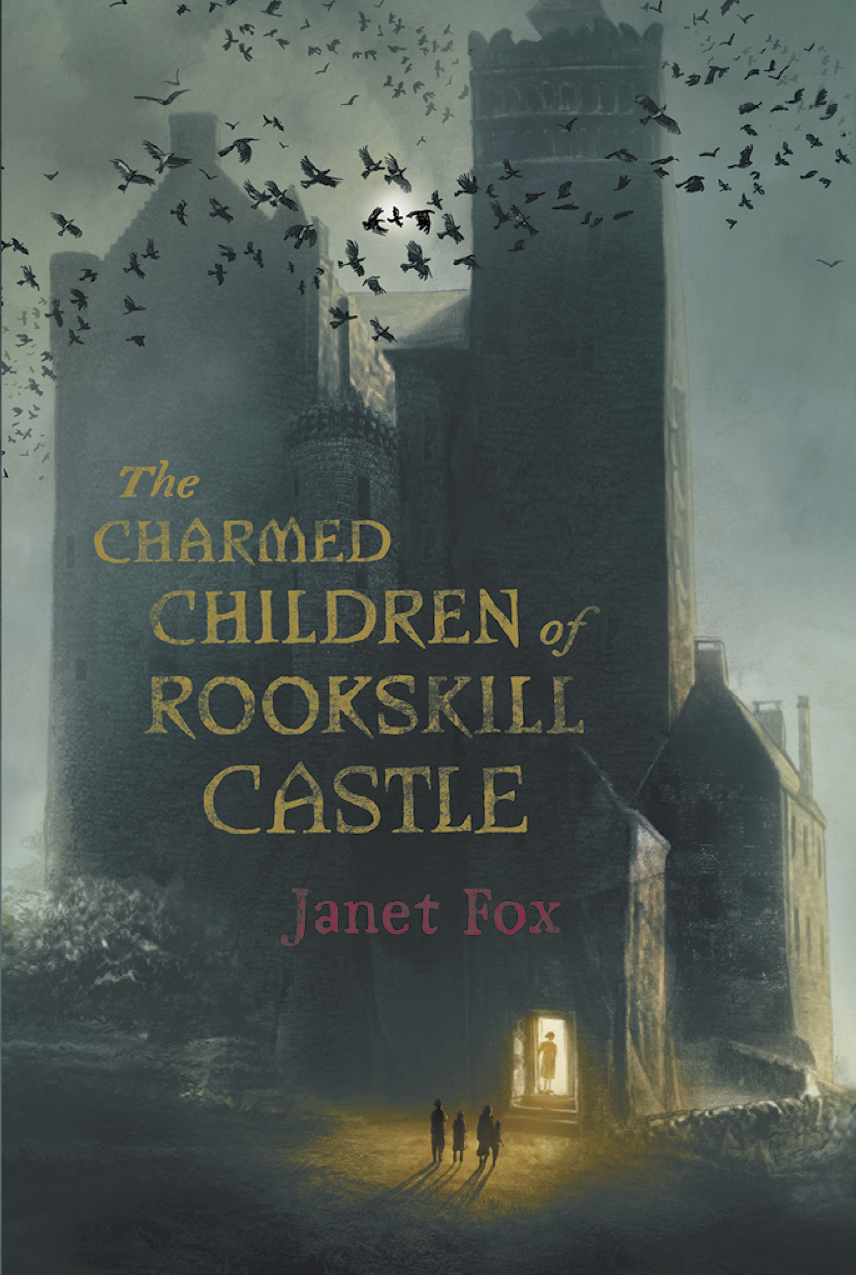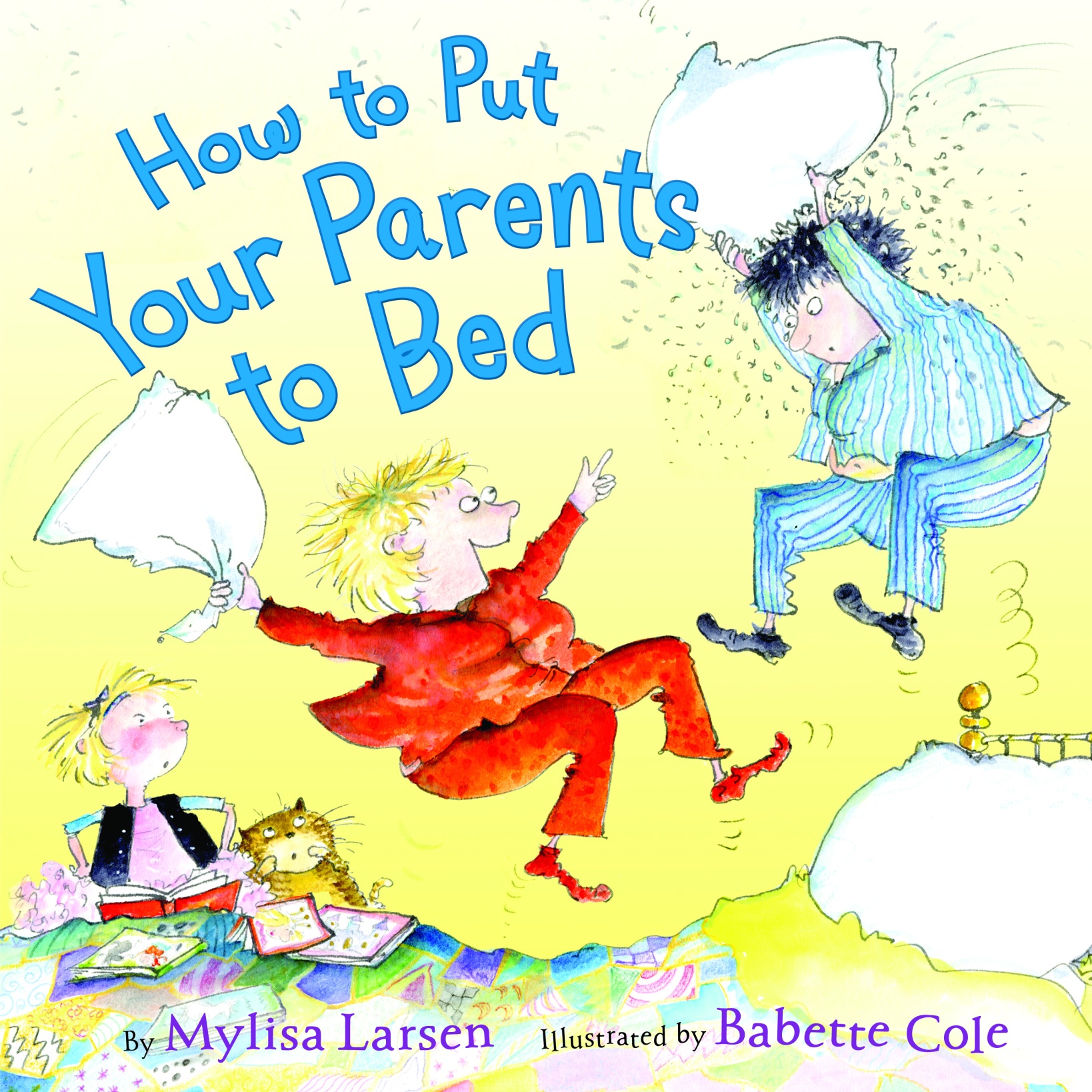It’s the release date for the incredibly engaging and moving story, THE ADVENTURES OF A GIRL CALLED BICYCLE by Christina Uss and the EMU’s Debut Group couldn’t be more excited! A novel about “a girl who loves her home in the Nearly Silent Monastery, but the pull of friendship leads her on a coast-to-coast cycling adventure, complete with hauntings, runaway stallions, lucky inventions, and a mysterious black-clad pursuer.”
Here is Elizabeth Acevedo‘s interview with the brilliant editor of BICYCLE, Margaret Ferguson.
Interview with Margaret Ferguson, Editor of THE ADVENTURES OF A GIRL CALLED BICYCLE
***
What was it about Christina Uss’ THE ADVENTURES OF A GIRL CALLED BICYCLE that first got you interested in acquiring it and that made this book strike a chord for you?
Every once in awhile, an editor is lucky enough to have a manuscript come across their desk that seems unique and that’s how I felt about THE ADVENTURES OF A GIRL CALLED BICYCLE. I loved that it was about someone who is an introvert and that it captured that special relationship some children have with their bicycles and all the freedom that goes with being able to get on a bike and go somewhere by yourself. And I loved the sense of community and that so many people care and watch out for Bicycle on her journey.

Would you say you were a big cycling fan prior to acquiring this book?
I will admit that I have never been a fan of cycling–it is a very time consuming sport and my husband spends a lot of time on his bike when I think he should be doing other things–but after I read THE ADVENTURES OF A GIRL CALLED BICYCLE I came home and said, “I get it now.”
Who is you favorite character from the book and why are you drawn to them?
There are too many to pick from–but if I have to, it would be Griffin G. Griffin, the friendly ghost who haunts Bicycle’s bicycle for part of her journey. He is such a good friend–he sings when the pedaling gets tough, offers wisdom, and has her back. Those kinds of friends are hard to come by.
***
A book that reads and fast as Bicycle’s bicycle, Clunk, this is a fresh take on an adventurous twelve-year old looking to find her place in the world. As the Kirkus
starred review claims: “Readers will eagerly join Bicycle and “pedal headfirst” into this terrific adventure, which is chock-full of heart and humor.” Buy your copy here, or here, or here.
******
Thank you, for that fabulous interview, Elizabeth! And now the celebration continues with Hayley Barrett and a Bookish Bike Ride.
A Bookish Bike Ride
The Emus are celebrating with Christina Uss! Her debut novel, THE ADVENTURES OF A GIRL CALLED BICYCLE,
Her debut novel, THE ADVENTURES OF A GIRL CALLED BICYCLE,  follows intrepid cyclist and friend-finder Bicycle as she pedals across the United States.
follows intrepid cyclist and friend-finder Bicycle as she pedals across the United States.
From the start of her ride in Washington, DC on trusty, rusty Clunk to when she dismounts The Fortune, her whiz-bang, Inspector Gadget-style bike, in San Francisco, Bicycle’s determination and resourcefulness pave the way to her success. She pushes ever onward, through prairies and over mountains, despite challenges and troubles. Along the way, she helps and is helped by others, including a ghost named Griffin, an herbivore named Cannibal, a chef by the name of Marie Petitchou, and a big-hearted pie-fryer called Jeremiah. Finally, Bicycle victoriously concludes her two-wheeled tour of the USA surrounded by new friends and reunited with those who loved her from the start.
I enjoy biking, but unlike Christina, I’m no adventure cyclist. Reading THE ADVENTURES OF A GIRL CALLED BICYCLE made me realize I’ve rarely pedaled more than a few miles. I wondered where I would go if I decided to try a longer ride. California was immediately out of the question. I needed a doable destination, someplace far but not too far, and because this ride was inspired by a book, someplace with a literary connection. The answer was easy:
Louisa May Alcott’s Orchard House!
For now, I’ll pedal there in my imagination. Let’s go!
Orchard House is two hour bike ride from home, but given my lack of experience, I’ll probably get there in three. I coast past my own childhood home, but I have to walk (and huff and puff) my bike up the steep Lowell Street hill. I remount and continue into Wilmington, Woburn, and Burlington. The roads are busy, but most drivers are courteous. I wave my thanks to those who slow down and give me space.
I spin through neighborhoods, past strip malls and industrial sites. After two hours, I’m in Lexington. The landscape gets greener here, with fewer houses, more conservation land, and almost no commercial areas. I have to hustle through Tophet Swamp to outrace the mosquitoes. (note to self: John was right. Remember bug spray next time!)
When I skirt the edge of the tree-hidden Air Force base, I know I’m in Concord. I pedal along the pretty country roads, listening to birdsong, and appreciating the shade offered by old, gnarled maples with soft, new leaves. I pause by the big farm near the Battle Road and admire their Highland cow’s sturdy calf. 
I go a little further, swing around the bend, and speed down the final stretch of Old Bedford Rd. At last, I reach the big brown house and dismount. I’m glad to see the parking lot across the street is full. A woman in a old-fashioned dress (Marmee?) greets a tour group at the front door. Kids on a field trip laugh and bump each other as they roll hoops on the lawn. I remember doing that with my friend Diane when we were kids.
I park my bike and take my lunch. The gardens are in their summer glory. Bees zip around the swaying sunflowers and hollyhocks. I choose a spot beside Bronson Alcott’s church-like schoolhouse to enjoy my solo picnic. LITTLE WOMEN’s four March sisters loved to picnic, so I feel right at home. 
As I rest and eat my sandwich, I can almost hear one of Christina’s characters, Sister Wanda. She asks her usual question, “What have you learned from this?”
Here’s what I’d say:
Riding a bike is a great way to experience the world.
Know when to heed good advice about bug spray.
This land is beautiful from sea to shining sea and full of helpful, generous people, delicious food, sunflowers, and wonderful books like Christina Uss’s THE ADVENTURES OF A GIRL CALLED BICYCLE.
Lastly, cookies rule! Good thing I brought some. I’ll need them for the long ride home.
****
Cookies, of course, are good both on and off the bike. You might want to go get some to munch on as you enjoy Anna Redding‘s interview of Christina herself!
Anna Redding’s Interview of Christina Uss
The Adventures of a Girl Called Bicycle launches today and I have to say I was charmed THROUGH and THROUGH by this amazing middle-grade novel. And you will be, too. It’s one of those stories, the world is so richly drawn, the characters so lovingly crafted… that they come to live with you forever. You just find yourself thinking about these characters, their lives, long after you have read the last line.
I am so thrilled to be able to have a conversation with author Christa Uss about her novel, The Adventures of a Girl Called Bicycle.
Anna– I want to start with a couple of questions about craft. From the first sentence of The Adventures of a Girl Called Bicycle, I was swept away. Your world building and character development are so complete and rich, and yet effortlessly falls off the page. And into that, you’ve worked in marvelous pacing and tension. (Readers, I’m not kidding, wait until you open this book, better have a comfy seat!) I’m curious about your process. Was this book inside of you and developed that way? Was the conscious effort? Please, give us fellow writers some insight!
Christina – This book literally began with its title. My husband was commenting on how I was doing a lot of freelance writing about bicycling while also reading all these books from my childhood when I wanted to relax, and he said, “Someday, you’re going to write a children’s book.” And I said, “Oh yeah? What will that book be?” And he replied, “It’ll be called The Adventures of a Girl Called Bicycle.” I leapt out of my chair and said, “YES. I AM going to write that book. Why is she called Bicycle? What adventures does she have? I think she rides her bike across the United States.” And I ran upstairs and the story started pouring out of me. (This was before I had my twins, so I could write on a whim instead of having to schedule and protect writing time like I do now.) I wrote nearly every day for weeks, and edited for months. It was so much fun to dive into this universe that was balanced somewhere between reality and the way I wish reality was and ask my characters What Happens Next? And they always had an answer for me.
Anna– Authenticity is an important aspect of any writing and it’s clear that you have some experience cycling! Was it fun to bring your own experiences into the book? And how do you mine your own experience to inform your writing?
Christina – It was THE BEST to bring in my own experiences riding a bike across the United States into the story. I felt completely confident that everything I was writing about cycling was as true as I could make it – the thrills, the exhaustion, the chasing dogs, and especially the unstoppable kindness of people towards a two-wheeled traveler who shows up on their doorsteps. I faithfully kept journals from the two times I rode across the country (first east-to-west, then north-to-south), plus during my years working as an adventure tour guide all over the U.S., and I frequently went back to those journal entries to make sure I was capturing what I’d really felt, heard, seen, smelled, and tasted on my own journeys.
Anna– Reading The Adventures of a Girl Called Bicycle, I felt constantly surprised which is a rare gift for readers…surprise. Thinking about that, part of the surprise is the sweetness between your cast of characters, and unlikely friendships. There is a real love that comes through the pages of this book and fills you up as you are reading, even though there is still tension, even though we are marching forward. How did you do that?! Where does that come from?
Christina – Awww, I love that you said this. I certainly hope kids feel the sweetness. Traveling by bike endlessly renews my faith in humanity. I and many other long-distance cycling friends experience so much surprising generosity whenever we pedal into the unknown – people giving us sandwiches! fresh peaches! cookies! ice-cold lemonade in the desert! a place to sleep! a place to shower! letting us borrow a car to watch fireworks! giving us lifts to the emergency room! – finding those connections time and time again never stops being magical. I wanted to communicate to kids that when you meet people face-to-face, especially if you’re perched on the seat of a bike, their first instinct is to help you.
Anna– And on riding! Bicycle’s packing list for her backpack shows us what’s most important to her, the must-have’s before a top-secret cross country journey. What would you put in your own pack?
Christina – Oooooh. My favorite riding clothes made out of space-age fabric that keep me warm even when I’m wet, as many snacks as I could cram in including lots of Trader Joe’s crunchy peanut butter and a big ol’ spoon, a credit card, maps from the Adventure Cycling Association, a book of Rumi poetry, and a nice thick journal and a pen. And postcard stamps. I would not bring a phone – I’d stop at libraries and email home when I could!
Anna– I think the idea of having the freedom to find your own destiny, your own identity, and your own friends is so powerful. Has there been a moment in your own cycling where you touched that, an experience, a chance meeting, a decision that really formed you?
Christina – I moved away from my home when I was eleven due to my dad changing jobs. (I remember telling my parents I wasn’t going to move with them, I was going to live with my best friend and sleep on her family’s couch for the rest of my life instead. Somehow, that plan didn’t materialize.) When I went in to the first day at my new school, the teacher showed me a seat next to a nice-looking girl with very long hair and said, “Nancy, you be Christina’s friend, all right?” And Nancy did just that – she not only became my instant friend, she made sure all of her friends became my instant friends as well. We’re still friends to this day. Something about that convinced me that if you’re open to the possibility, friendships can happen anywhere, anytime, with anyone – it it’s one of the beautiful mysteries of life.
Readers, all I can say, is we all have some book shopping to do!
Enjoy!
Anna
****
To close out our celebration, here’s Ann Braden with Curriculum Connections.
The Adventures of a Girl Called Bicycle: Curriculum Connections
Kirkus gave The Adventures of a Girl Called Bicycle a STARRED review and said: “Readers will eagerly join Bicycle and ‘pedal headfirst’ into this terrific adventure, which is chock-full of heart and humor.”
This will be a fabulous book to have on classroom shelves. Introverts especially will be able to connect with this AND imagine going on an amazing cross-country adventure. As we all know the imagination can be a wide open expanse in the middle grade years, and when we’re willing to tap into it as educators, the learning can be remarkable.
I still remember (in vivid detail) the project I did as a sixth grader for a unit on Canada. With three friends I got to plan our own cross-country trip across Canada’s provinces, determining where to stop and what to do there, driving distances, what to bring, etc. We kept a journal to document our (virtual) trip, and my memories are so strong it’s as though I actually went on the real trip.
Not only is The Adventures of a Girl Called Bicycle a fun story, but it could be a great tool to prompt students to plan out their own cross-country bike trip. Where would they go? How long would it take to get from one place to another? What would they have in their pack? It brings it math, geography, and the all-important investigation into a student’s priorities and passions.
***
Here’s to The Adventures of a Girl Called Bicycle! And here’s where you can buy it: Indiebound (it’s on the 2018 Summer Kids Indie Next List!), Barnes and Noble, and Amazon!
Happy reading!
SaveSave
 Anna Crowley Redding’s lively nonfiction debut, GOOGLE IT!: A History of Google from Feiwel & Friends brightens up nonfiction shelves across the nation tomorrow, August 14, 2018. We here at Emu’s Debuts can’t recommend it highly enough – read on to learn how Anna’s book will enlighten students and engage reluctant readers, plus find out how editor Holly West started Anna down the path to publication.
Anna Crowley Redding’s lively nonfiction debut, GOOGLE IT!: A History of Google from Feiwel & Friends brightens up nonfiction shelves across the nation tomorrow, August 14, 2018. We here at Emu’s Debuts can’t recommend it highly enough – read on to learn how Anna’s book will enlighten students and engage reluctant readers, plus find out how editor Holly West started Anna down the path to publication. Suddenly, I could point to Poster #4 to congratulate a student for finding a new way to attack a problem, or point to Poster #1 when a student tried to turn in a rushed assignment. It made it clear that there was no such things as smart or stupid: the only difference was one’s willingness to attack something with whatever kind of effort is needed. It was empowering for me, and most importantly, for the students.
Suddenly, I could point to Poster #4 to congratulate a student for finding a new way to attack a problem, or point to Poster #1 when a student tried to turn in a rushed assignment. It made it clear that there was no such things as smart or stupid: the only difference was one’s willingness to attack something with whatever kind of effort is needed. It was empowering for me, and most importantly, for the students. I have avidly devoured nonfiction since childhood, partly because I love learning new things, but even more so because every new book reminds me that the world of facts is far more interesting than we could even begin to imagine. Pangolins! Winchester Mystery House! Biddy Mason! Thank you, nonfiction. (And thank you, Google!)
I have avidly devoured nonfiction since childhood, partly because I love learning new things, but even more so because every new book reminds me that the world of facts is far more interesting than we could even begin to imagine. Pangolins! Winchester Mystery House! Biddy Mason! Thank you, nonfiction. (And thank you, Google!) designer, Raphael Geroni, who did a wonderful job. But Anna and I did have a few conversations about the inclusions of sidebars and inserts. We wanted to book to feel right to an audience used to reading online, and we both have a tendency to take “Wiki Walks” when browsing online, where if you want more information on something or have a question like the one she opened the book with: “How many stacked pennies would it take to reach the moon?” you can immediately open a new tab and Google the answer. So we wanted a way to have those answers and extra information readily available without disrupting the flow of the main text. And there were definitely some discussions mid-edits about which stories needed to be part of the main text and which tidbits and explanations could live in the sidebars.
designer, Raphael Geroni, who did a wonderful job. But Anna and I did have a few conversations about the inclusions of sidebars and inserts. We wanted to book to feel right to an audience used to reading online, and we both have a tendency to take “Wiki Walks” when browsing online, where if you want more information on something or have a question like the one she opened the book with: “How many stacked pennies would it take to reach the moon?” you can immediately open a new tab and Google the answer. So we wanted a way to have those answers and extra information readily available without disrupting the flow of the main text. And there were definitely some discussions mid-edits about which stories needed to be part of the main text and which tidbits and explanations could live in the sidebars.



 follows intrepid cyclist and friend-finder Bicycle as she pedals across the United States.
follows intrepid cyclist and friend-finder Bicycle as she pedals across the United States.




































